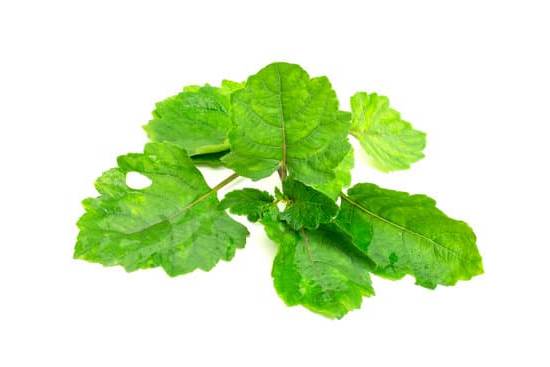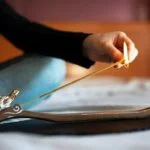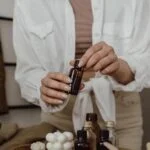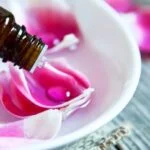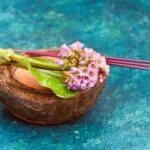Essential oils have long been used for their therapeutic properties in the practice of aromatherapy, which involves the use of plant extracts to improve physical and mental well-being. In this article, we will delve into how to make essential oils for aromatherapy right at home. Understanding the benefits of using essential oils is crucial in harnessing their healing powers and creating personalized blends that cater to individual needs.
The process of making essential oils starts with selecting the right plant materials that contain the desired aromatic compounds. Various methods can be used to extract these potent oils from plants, each with its own unique advantages and considerations. Whether through steam distillation, cold pressing, or maceration, extracting essential oils requires precision and care to preserve their therapeutic properties effectively.
For those looking to embark on the journey of creating their own homemade essential oils, a step-by-step guide will provide insights into the process. From choosing the right plants to extracting the oils and storing them properly, every step plays a vital role in ensuring a high-quality end product. Additionally, understanding safety precautions when handling these concentrated plant extracts is essential for preventing any potential risks or adverse reactions.
Understanding the Benefits of Using Essential Oils in Aromatherapy
Essential oils have been used for centuries in various cultures for their therapeutic and healing properties. In aromatherapy, these highly concentrated plant extracts are used to promote physical, emotional, and mental well-being. The benefits of using essential oils in aromatherapy are vast and can target a wide range of issues, from stress relief and relaxation to pain management and immune support.
One of the key benefits of using essential oils in aromatherapy is their ability to affect the limbic system, which is the part of the brain that controls emotions and memories. By inhaling the aromatic molecules of essential oils, they can trigger responses in the brain that can help reduce stress, anxiety, and even improve mood. This makes essential oils a powerful tool for promoting mental wellness and emotional balance.
In addition to their emotional benefits, essential oils also have physical healing properties that make them valuable in aromatherapy practices. Many essential oils have antibacterial, antifungal, or anti-inflammatory properties that can help boost the immune system, alleviate pain, and support overall health. By understanding the specific benefits of different essential oils, individuals can create customized blends for their unique needs in aromatherapy practices.
Choosing the Right Plant Materials for Making Essential Oils
When it comes to making essential oils for aromatherapy, selecting the right plant materials is crucial to ensure a high-quality end product. Different plants contain different aromatic compounds that contribute to their unique scents and therapeutic properties. Here are some tips on choosing the best plant materials for making essential oils at home:
- Research: Before starting the process of making essential oils, it is important to research the specific plants that you want to use. Make sure they are safe for use in aromatherapy and understand their individual benefits.
- Quality: Opt for high-quality plant materials to achieve better results. Look for organic or wildcrafted plants that have not been exposed to pesticides or other chemicals.
- Aroma: Consider the scent profile of the plants you choose, as this will determine the final aroma of your essential oil. Some popular options include lavender, peppermint, eucalyptus, and citrus fruits.
To make essential oils for aromatherapy, you can use a variety of plant parts such as flowers, leaves, stems, bark, or roots. Each part may yield a different type of essential oil with its own unique therapeutic properties. Experimenting with different plant materials can help you discover new fragrance combinations and expand your aromatherapy repertoire.
Remember that proper identification and sourcing of plant materials are essential for creating safe and effective homemade essential oils. By carefully selecting the right plants and understanding their characteristics, you can create customized blends that cater to your specific needs in aromatherapy practices.
Various Methods of Extracting Essential Oils From Plants
When it comes to making essential oils for aromatherapy, one of the most crucial steps is extracting the oils from plant materials. There are various methods to achieve this extraction, each with its unique benefits and considerations. Here are some common methods used in the process:
- Steam Distillation: This is one of the most popular methods for extracting essential oils from plants. In this process, steam is passed through the plant material, causing the release of essential oil molecules. The steam and oil vapor are then condensed back into a liquid form, separating the essential oil from the water.
- Cold Pressing: This method is commonly used for citrus fruits like lemon and orange. It involves pressing the plant material to release the essential oils. The oils are then collected and separated from any leftover plant matter or juice.
- Solvent Extraction: In this method, solvents like hexane or ethanol are used to extract essential oils from plant materials. After extraction, the solvent is evaporated, leaving behind pure essential oil. However, it’s important to note that solvent extraction may not be suitable for all plants due to potential chemical residues in the final product.
Each extraction method has its advantages and disadvantages in terms of efficiency, purity, and safety. Experimenting with different methods can help you find which works best for your desired results when making essential oils at home for aromatherapy.
- Determine which method is best suited for the specific plant material you are using.
- Research proper techniques and precautions before attempting any extraction method.
- Consider investing in quality equipment to ensure a safe and effective extraction process.
Step-by-Step Guide on How to Make Essential Oils at Home
Gathering Plant Materials
To begin making essential oils at home, the first step is to gather the necessary plant materials. You can choose from a variety of herbs and plants known for their aromatic properties such as lavender, peppermint, or eucalyptus. Make sure to use fresh and organic materials to ensure the highest quality of essential oils.
Extraction Methods
There are several methods for extracting essential oils from plant materials. One common method is steam distillation, where steam is used to extract the aromatic compounds from the plants. Another method is cold pressing, typically used for citrus fruits like lemon or orange. Each method has its own benefits and yields different results in terms of aroma and potency.
The Distillation Process
One popular method of extracting essential oils at home is through steam distillation. To do this, you will need a still or distiller apparatus that can be easily purchased online or at specialty stores. The plant material is placed in a container along with water, and then steam is passed through the mixture.
The steam carries the aromatic compounds through a tube where they condense into a separate container. This process requires careful monitoring of temperature and timing to ensure the best quality of essential oil.
By following these steps and experimenting with different plant materials and extraction methods, you can create unique and personalized essential oils for aromatherapy purposes right in the comfort of your own home. Remember to research each plant material thoroughly before starting the extraction process to ensure safety and effectiveness in your homemade essential oils.
Tips for Proper Storage and Preservation of Homemade Essential Oils
When it comes to creating your own essential oils for aromatherapy, proper storage and preservation are crucial to maintain their potency and effectiveness. In this section, we will discuss some tips on how to store and preserve homemade essential oils to ensure they retain their therapeutic properties for as long as possible.
Use the Right Containers
The type of container you choose to store your homemade essential oils can significantly impact their shelf life. It is important to use dark glass containers such as amber or cobalt blue bottles to protect the oils from light exposure, which can cause them to degrade over time. Additionally, make sure the containers have tight-fitting lids to prevent air from entering and oxidizing the oils.
Store in a Cool, Dark Place
Essential oils are sensitive to heat and light, so it is essential to store them in a cool, dark place away from direct sunlight and extreme temperatures. A storage area such as a pantry or cupboard that maintains a consistent temperature is ideal for preserving the quality of your homemade essential oils. Avoid storing them near heat sources like stoves or ovens.
Avoid Contamination
To prevent contamination of your homemade essential oils, always use clean droppers or pipettes when transferring the oils from one container to another. Make sure to label each bottle with the name of the oil and the date it was made to keep track of its expiration date. Additionally, do not touch the oil dropper with your fingers as this can introduce bacteria into the oil and shorten its shelf life.
By following these tips for proper storage and preservation of homemade essential oils, you can ensure that they remain potent and effective for use in various aromatherapy recipes. Taking care in how you store your oils will allow you to enjoy their therapeutic benefits for an extended period while enhancing your well-being through aromatherapy practices.
Safety Precautions When Handling Essential Oils
Essential oils are highly concentrated plant extracts that offer a range of benefits when used in aromatherapy. While they have numerous positive effects, it is essential to handle them with care due to their potency. Safety precautions must be taken when working with essential oils to ensure proper handling and storage.
When making essential oils for aromatherapy at home, it is crucial to wear protective gear such as gloves and safety goggles. Some essential oils can cause skin irritation or allergic reactions, so minimizing direct contact with the oils is important. Additionally, adequate ventilation in the workspace is necessary to prevent inhaling high concentrations of the volatile compounds present in the oils.
Proper labeling of containers is key to avoiding accidents or misuse of essential oils. Clearly marking each bottle with the name of the oil and the date it was made will help you keep track of your creations. Store essential oils in dark glass bottles away from direct sunlight and heat sources to maintain their potency and prolong their shelf life.
| Safety Precautions | When Handling Essential Oils |
|---|---|
| Wear Protective Gear | such as gloves and safety goggles |
| Ensure Adequate Ventilation | to prevent inhaling high concentrations of volatile compounds |
| Proper Labeling | of containers for easy identification |
| Store Properly | in dark glass bottles away from sunlight and heat sources |
Adhering to these safety precautions when handling essential oils will help you enjoy the benefits of aromatherapy without any adverse effects. By taking the necessary steps to protect yourself and others around you, you can continue creating homemade essential oils safely and effectively for enhanced well-being through aromatherapy practices.
Creative Ways to Use Homemade Essential Oils in Aromatherapy Recipes
Aromatherapy is a holistic healing treatment that uses natural plant extracts, known as essential oils, to promote physical and psychological well-being. These powerful oils are highly concentrated and capture the essence of the plant they are derived from. Whether you are looking to relax, boost your mood, or alleviate certain health conditions, understanding how to make essential oils for aromatherapy can open up a world of possibilities for creating personalized blends and recipes.
One creative way to use homemade essential oils in aromatherapy recipes is by incorporating them into DIY skincare products. You can mix a few drops of lavender essential oil with a carrier oil like jojoba or almond oil to create a soothing facial serum or moisturizer. Similarly, adding citrus essential oils such as orange or lemon to your body scrub can not only exfoliate your skin but also invigorate your senses with their uplifting aroma.
Another exciting way to incorporate homemade essential oils into aromatherapy recipes is by creating your own room sprays or diffuser blends. By combining different essential oils like eucalyptus, peppermint, and tea tree oil, you can create an energizing blend to help improve focus and concentration. Alternatively, blending floral scents like rose, jasmine, and geranium can create a calming atmosphere perfect for relaxation and stress relief.
In addition to skincare products and room sprays, homemade essential oils can also be used in creating custom massage blends or bath soaks. Mixing relaxing oils like chamomile and ylang-ylang with a carrier oil such as coconut or sweet almond can enhance the benefits of massage therapy. Likewise, adding a few drops of soothing essential oils like lavender or cedarwood to your bath water can create a luxurious spa-like experience right in the comfort of your own home.
| Benefits of Using Essential Oils in Aromatherapy | How to Make Essential Oils for Aromatherapy |
|---|---|
| Promotes physical and psychological well-being | Understanding how to extract essential oils from plants |
| Provides relaxation and mood enhancement | Step-by-step guide on making essential oils at home |
| Alleviates certain health conditions | Tips for proper storage and preservation of homemade essential oils |
Conclusion and Final Thoughts on Making Essential Oils for Aromatherapy
In conclusion, learning how to make essential oils for aromatherapy can be a rewarding and fulfilling experience. By understanding the benefits of using essential oils and choosing the right plant materials for extraction, you can create high-quality oils at home. Whether you opt for steam distillation, cold pressing, or solvent extraction methods, each approach has its own set of advantages and unique qualities that influence the final product.
When making essential oils at home, it is crucial to follow safety precautions to prevent accidents or adverse reactions. Proper storage and preservation techniques will also ensure the longevity and potency of your homemade oils. With a step-by-step guide and some creativity, you can incorporate these oils into various aromatherapy recipes to enhance your well-being and create a calming atmosphere in your living space.
Ultimately, the process of making essential oils for aromatherapy allows you to connect with nature on a deeper level and harness the therapeutic benefits of plants. Whether you are looking to relax, uplift your mood, or alleviate certain ailments, these natural remedies can provide a holistic approach to wellness.
Experimenting with different scents and blends can lead to personalized formulas that cater to your specific needs and preferences. So why not embark on this journey of self-discovery and self-care by exploring the art of creating homemade essential oils for aromatherapy?
Frequently Asked Questions
How Do You Mix Essential Oils for Aromatherapy?
Mixing essential oils for aromatherapy requires careful consideration of the scents and their therapeutic properties. It is important to select complementary oils that work well together, keeping in mind the desired outcome. Start by choosing a base note, middle note, and top note oil for balance.
How Do You Dilute Essential Oils for Aromatherapy?
Diluting essential oils for aromatherapy is crucial to prevent skin irritation or sensitization. The general rule of thumb is to dilute essential oils with a carrier oil like jojoba or coconut oil at a 2% concentration for adults. This means using roughly 12 drops of essential oil per ounce of carrier oil.
Can You Make Your Own Essential Oils for Diffuser?
Making your own essential oils for a diffuser can be a fun and rewarding process. However, it’s important to note that true essential oils require large quantities of plant material and proper distillation equipment. You can create DIY versions using dried herbs and carrier oils, but they won’t be as concentrated or potent as commercially produced ones.

Are you looking for a natural way to improve your health and wellbeing?
If so, aromatherapy may be the answer for you.

